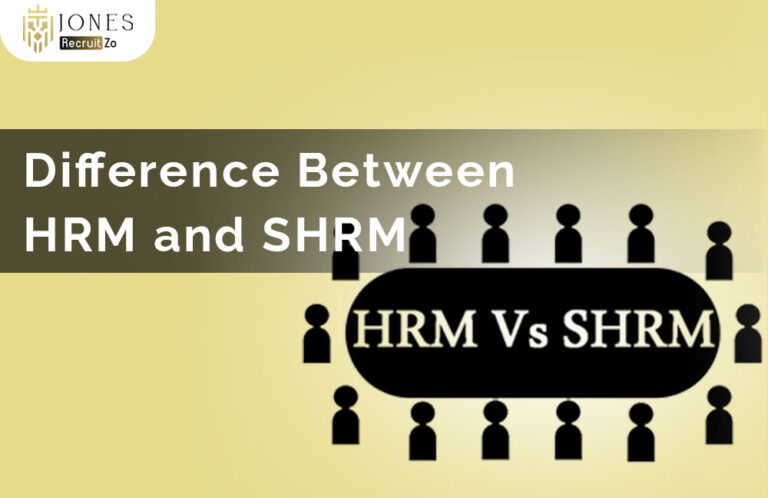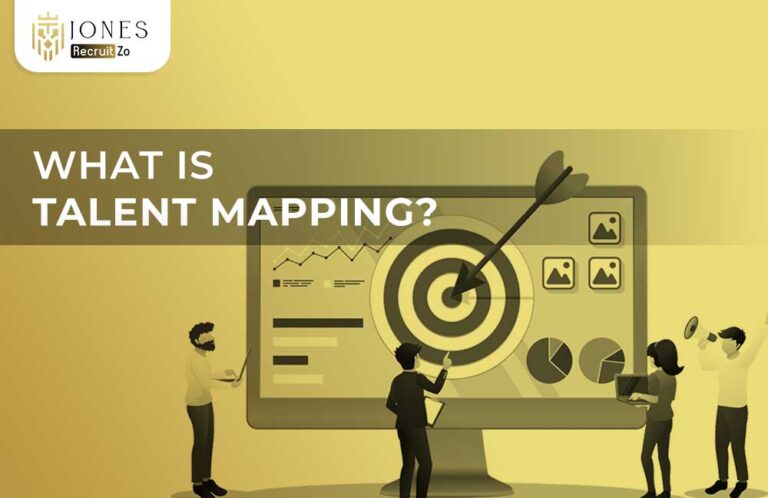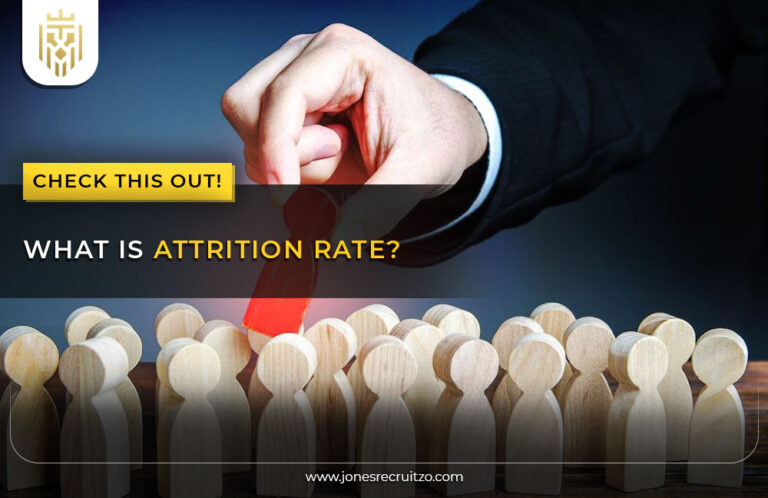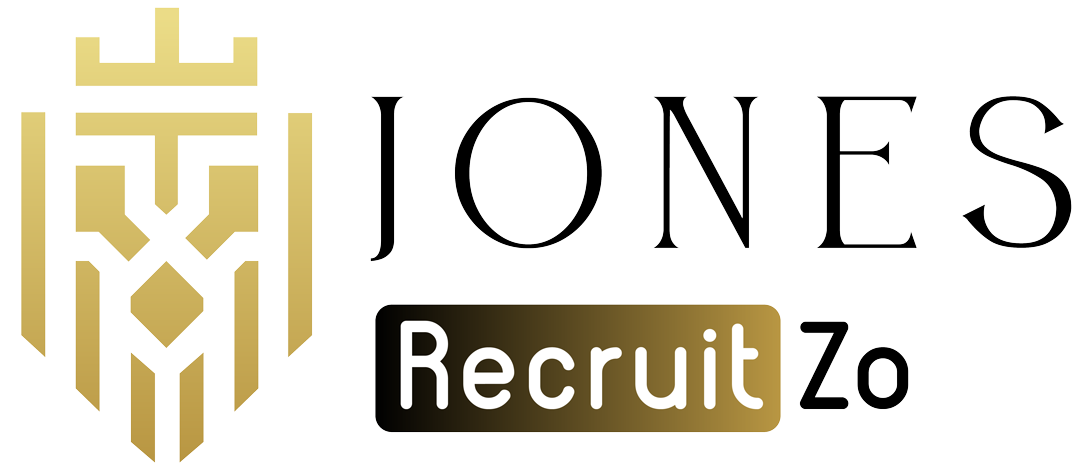What is strategic human resource management?
Strategic human resource management has become an interdisciplinary approach to managing people such that human resource policies and their implementation are congruent with the overall strategic goals of the organisation. Whereas traditional HRM focuses on day-to-day operations, SHRM is all about long-range planning in such a way that every single human resource function ties in directly with the mission and growth of the company. In doing this, SHRM integrates people management into the wider organisational strategy to attain results for the business.
Importance of Strategic Human Resource Management
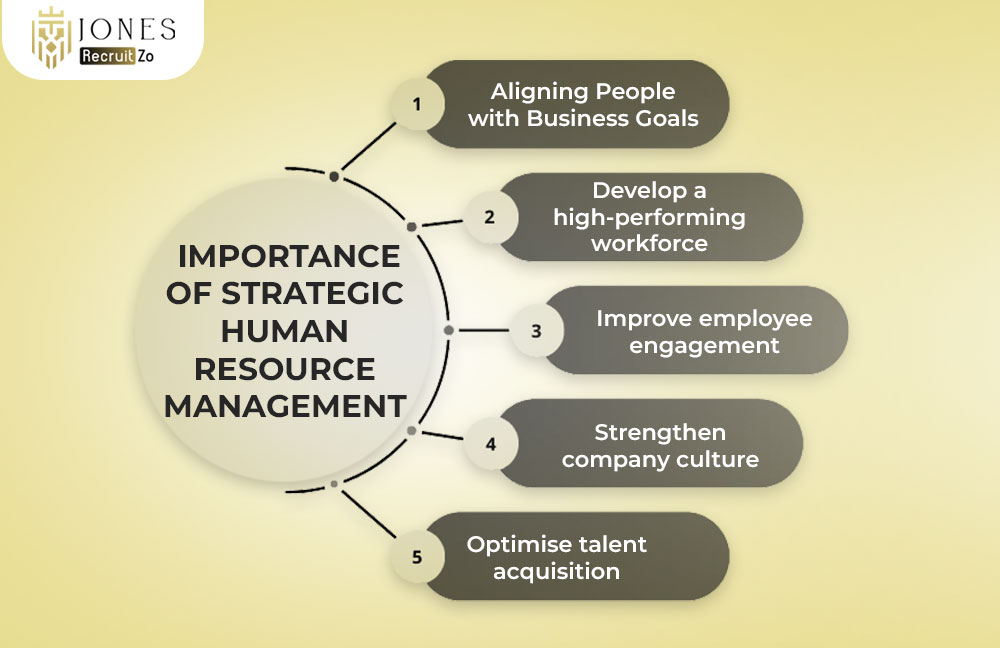
Strategic HRM plays a crucial role in shaping the success and sustainability of any business. By proactively managing talent and aligning HR activities with company goals, businesses can gain a competitive edge.
Aligning People with Business Goals
Strategic HRM aims to ensure that the company employs, trains, and retains individuals who have the necessary skills and desires that align with its vision; however, this orientation needs to be backed up with operational HRM. This alignment, on the other hand, leads the organisation in the right direction and simultaneously maximises the potential of the workforce.
Develop a high-performing workforce
Having identified the highest-talented people, SHRM nurtures their skills to assemble teams that continuously perform at high levels. Employees are enhanced through development and performance measures, along with motivation and reward methods that are geared towards fulfilling and possibly exceeding expectations.
Improve employee engagement
When HR strategies become linked to long-term goals of the business, employees are more able to understand their role in the larger scheme of things. This clarity and purpose naturally enhance engagement and commitment.
Strengthen company culture
With strategic HRM, company values and work culture are continually reinforced through hiring, training, and performance evaluations. When a culture is strong and aligned, the satisfaction seems to increase with the people, followed by retention.
Optimise talent acquisition
Instead of hiring from a reactive standpoint, SHRM attacks forecasting talent needs and planning them. This results in better recruitment decisions; it lowers costs and improves quality of hire.
Key Components of Strategic HRM
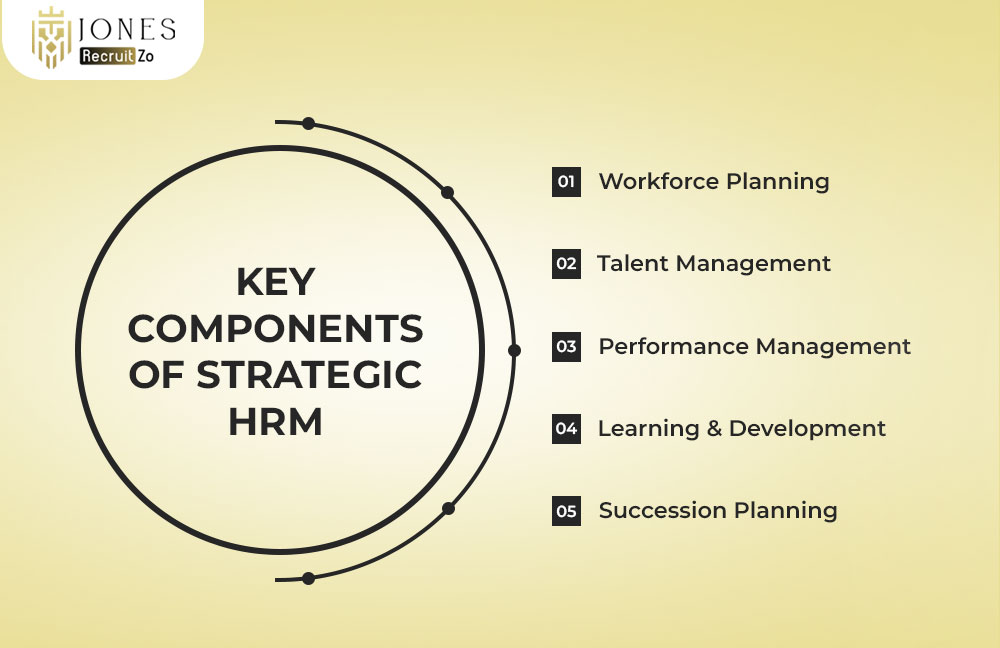
Strategic HRM is built on several core pillars, each playing a vital role in aligning HR efforts with business objectives.
Workforce Planning
Estimating the workforce needs of the future and determining what roles and skills will be needed to achieve company goals; the idea is to always have talents at the exact place and at the right time in the business.
Talent Management
Talent management is all about attracting, selecting, and retaining talented individuals who could help with the worker’s company’s maximal potential throughout their lifecycle within the said company.
Performance Management
Performance reviews, the provision of feedback, and the setting of targets help maintain focus so that employees can improve on a continuous basis. Strategic HRM connects all these to other broad-based business KPIs.
Learning & Development
This considers training employees for their current position, developing them for career progressions, and retaining the knowledge the company requires. It acts as a means for any other developmental need for improving skill base and leadership potential for long-term growth.
Succession Planning
Ensuring further development of potential leaders, thus ensuring continuity. Succession planning prepares high potentials for key roles, thus reducing disruption during a transition.
How to Implement Strategic HRM
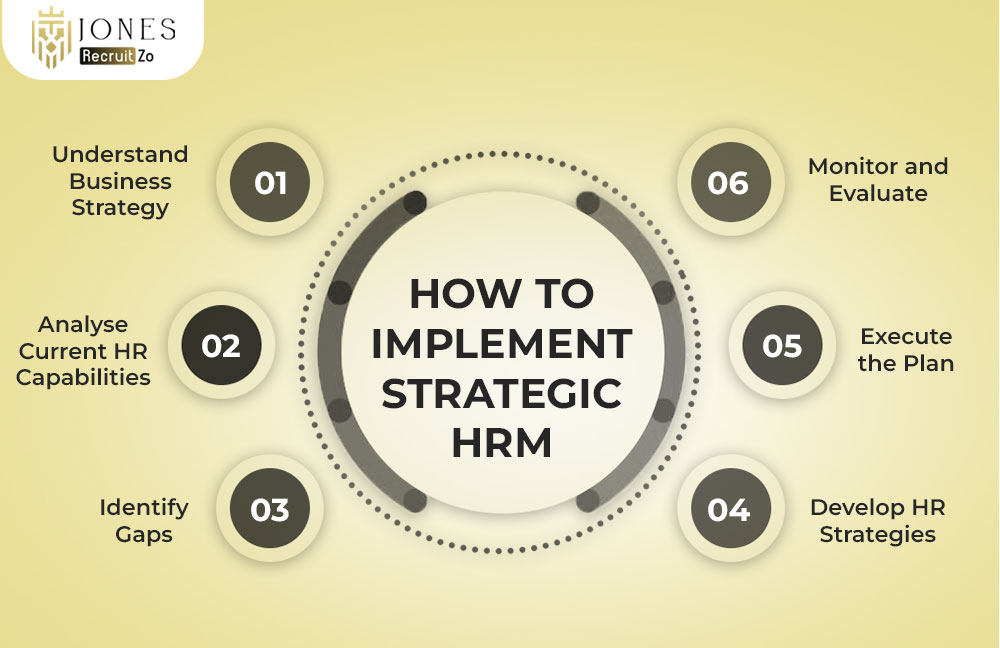
Implementing strategic human resource management requires a thoughtful and structured approach that connects HR practices with the business’s future direction.
Understand Business Strategy
The first step is to gain a thorough understanding of the firm’s long-term objectives, issues facing the organisation, and the competitive environment. Such a peculiarity is what every human resource management initiative will be based upon.
Analyse Current HR Capabilities
Examination of the existing workforce, systems, and HR processes will provide a good indication of where the company stands. Such an analysis will bring forth strengths, weaknesses, and opportunities.
Identify Gaps
Once current capabilities are assessed, gaps will be discovered that lie between the current position of the business and where it truly wants to be. These could vary into skills shortages, leadership voids, or even cultural discord.
Develop HR Strategies
Defining based on existing gaps, the HR shall then proceed to design strategies specifically surrounding recruitment, training, compensation, and employee engagement, all aimed at meeting the business objectives.
Execute the Plan
Execution of implementation through which the plan or strategy is launched via policy, programs, and systems. Getting all communications and leadership support during this phase becomes crucial.
Monitor and Evaluate
Continual evaluation is the key to determining success and adjustment. KPIs like retention rate, productivity, and engagement can be used as yardsticks for the progress.
FAQs
1) What is strategic human resource management?
Strategic HRM means the proactive management of people together with the company’s longer-term business strategy, concentrating on workforce planning, development, and retention.
2) Why is strategic human resource management important?
Aligning human capital with business goals maximises employees’ performance, supports company growth, and develops a workforce that is flexible and engaged.
3) What are the components of strategic HRM?
Workforce planning, talent management, performance management, learning and development, and succession planning are the key components.
4) How to Implement Strategic HRM?
Become familiarised with business goals, assess the present HR capabilities, identify gaps, develop HR strategies targeting those gaps, implement these strategies, and follow up on their progress with time.


